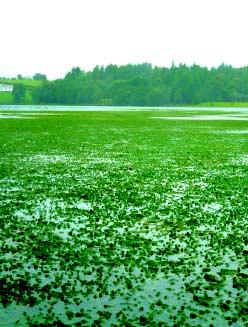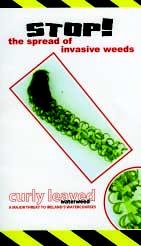 The number of non-native freshwater macrophytes species recorded in Irish watercourses has increased significantly since 1990. Serious concern has been expressed among a broad range of interest groups because of the potential adverse ecological, economic and social consequences that can attend the presence of such species. However, it should be acknowledged that not all non-native species are invasive and that current problems are caused by only a small percentage of those plants that have been introduced into the country. Whether or not an introduced plant will become a true invasive is influenced by a number of factors. These include the number of propagules that the species is capable of releasing into the new habitat, the biological traits of the introduced species, the competitive abilities of the indigenous species, and the susceptibility of the habitat to invasion. The presence of a truly invasive species is evidenced by an unexpectedly rapid biomass expansion and a demonstrable adverse impact on native communities. A number of non-native freshwater macro-phytes have recently been listed as potentially high impact species by the Environment Protection Agency in Ireland as part of their Alien Species Risk Assessment. These include
Crassula helmsii, Elodea nuttallii, Azolla filiculoides, Hydrocotyle ranunculoides and Myriophyllum aquaticum
. These are species that are currently deemed to pose a significant risk to Irish native community diversity. Another aquatic plant,
Lagarosiphon major
, was not included in the list but is now considered to represent a significant potential risk to the environment.
The number of non-native freshwater macrophytes species recorded in Irish watercourses has increased significantly since 1990. Serious concern has been expressed among a broad range of interest groups because of the potential adverse ecological, economic and social consequences that can attend the presence of such species. However, it should be acknowledged that not all non-native species are invasive and that current problems are caused by only a small percentage of those plants that have been introduced into the country. Whether or not an introduced plant will become a true invasive is influenced by a number of factors. These include the number of propagules that the species is capable of releasing into the new habitat, the biological traits of the introduced species, the competitive abilities of the indigenous species, and the susceptibility of the habitat to invasion. The presence of a truly invasive species is evidenced by an unexpectedly rapid biomass expansion and a demonstrable adverse impact on native communities. A number of non-native freshwater macro-phytes have recently been listed as potentially high impact species by the Environment Protection Agency in Ireland as part of their Alien Species Risk Assessment. These include
Crassula helmsii, Elodea nuttallii, Azolla filiculoides, Hydrocotyle ranunculoides and Myriophyllum aquaticum
. These are species that are currently deemed to pose a significant risk to Irish native community diversity. Another aquatic plant,
Lagarosiphon major
, was not included in the list but is now considered to represent a significant potential risk to the environment.
 During 2005 two invasive species,
L. major and E. nuttallii
, came to particular prominence in Irish watercourses. Where they were recorded both expressed themselves as true invasives by producing virtual plant monocultures, by rapidly expanding their range within the affected habitat and by displacing indigenous plant species and communities. Furthermore, their presence significantly impacted amenity usage of the infested waterbodies.
During 2005 two invasive species,
L. major and E. nuttallii
, came to particular prominence in Irish watercourses. Where they were recorded both expressed themselves as true invasives by producing virtual plant monocultures, by rapidly expanding their range within the affected habitat and by displacing indigenous plant species and communities. Furthermore, their presence significantly impacted amenity usage of the infested waterbodies.
 The recent distribution of invasive species in Ireland, the adverse impacts that these have already had on the native biota, and the potential ecological, economic and social risks associated with these will be investigated. The biological traits that confer the obvious competitive advantage on these invasives will also be explored. The need for comprehensive and enforceable legislation, a clear and concise education and awareness programme, and a workable suite of efficient, environmentally sensitive and cost effective control methods to prevent the entry of invasives into the country and their spread within the country will be highlighted.
The recent distribution of invasive species in Ireland, the adverse impacts that these have already had on the native biota, and the potential ecological, economic and social risks associated with these will be investigated. The biological traits that confer the obvious competitive advantage on these invasives will also be explored. The need for comprehensive and enforceable legislation, a clear and concise education and awareness programme, and a workable suite of efficient, environmentally sensitive and cost effective control methods to prevent the entry of invasives into the country and their spread within the country will be highlighted.
Further information available from: Dr Joe Caffrey
The Central Fisheries Board,
Swords Business Campus,
Swords, Co. Dublin.
Tel: 01 8842600, Fax: 01 88420060
E-mail:
[email protected]
Website:
www.cfb.ie
|



